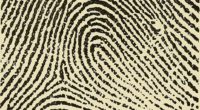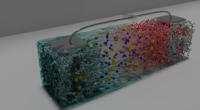General Knowledge: Circulation Questions
31. Blood flows from the pulmonary veins into the: (a) pulmonary arteries; (b) right atrium; (c) lungs; (d) left atrium; (e) left ventricle
32. Blood flows from the right atrium into the: (a) right ventricle; (b) superior vena cava; (c) left atrium; (d) pulmonary artery; (e) pulmonary veins
33. The mitral (bicuspid) valve is located between the: (a) r. ventricle and aorta; (b) r. ventricle and pulmonary artery; (c) l. atrium and the l. ventricle; (d) right and left atria; (e) r. and l. ventricles
34. There is a semilunar valve between the: (a) r. ventricle and aorta; (b) r. ventricle and pulmonary artery; (c) l. atrium and l. ventricle; (d) r. atrium and r. ventricle; (e) l. ventricle and pulmonary artery.
35. Blood flows from the superior vena cava into the: (a) r. atrium; (b) inferior vena cava; (c) l. atrium; (d) pulmonary artery; (e) aorta.
36. The S. A. Node (pacemaker) is located in the: (a) r. atrium; (b) superior vena cava; (c) r. ventricle; (d) l. atrium; (e) l. ventricle.
37. The A.V. Node: (a) is located in the l. atrium; (b) causes the atrial systole; (c) causes ventricular systole; (d) is located in the middle septum of the heart.
38. The actual muscle fibers which cause the ventricles to contract are the: (a) myoepithelial fibers; (b) Purkinje fibers (conduction myofibers); (c) baroreceptors; (d) vagus nerve.
39. Which of the following is closely associated with the chordae tendineae? (a) semi-lunar valves; (b) S.A. Node; (c) papillary muscle; (d) coronary arteries.
40. The initiation of the heart beat is the responsibility of the: (a) cardiovascular center; (b) baroreceptors; (c) vagus nerve; (d) SA Node; (e) fossa ovalis.
41. Blood in the pulmonary capillaries (lungs) that has just picked up oxygen will go next into: (a) pulmonary arteries to the l. atrium; (b) pulmonary arteries to the r. atrium; (c) pulmonary veins to the l. atrium; (d) pulmonary veins to the r. atrium; (e) pulmonary veins to the superior vena cava.
42. On an ECG, depolarization of the ventricles is represented by the: (a) P wave; (T wave; (c) QRS complex; (d) P-Q initial; (e) S-T segment.
43. Depolarization of the atria is represented by the: (a) P wave; (b) T wave; (c) QRS complex; (d) S-T segment.
44. Repolarization of the ventricles is represented by the: (a) P wave; (b) QRS complex; (c) T wave; (d) P-Q initial.
45. Blood always flows away from the heart in: (a) arteries; (b) veins; (c) capillaries
46. Oxygenated blood is found in arteries except: (a) aorta; (b) subclavian a. (c) pulmonary a. (d) pulmonary vein.
47. The so called “internal skeleton” of the heart: (a) is found between the atria and ventricles; (b) is composed of connective tissue; (c) is sometimes called the “internal skeleton” of the heart; (d) blocks electrical impulses from entering the ventricles; (e) all of the answers are correct.
48. When atrial pressure is higher than ventricular pressure: (a) semilunar valves are open; (b) a-v valves are closed; (c) blood is entering the aorta; (d) a-v valves are open
49. Assuming a cardiac cycle of 0.8s, how long are the atria in diastole? (a) .1; (b) .4 ; (c) .6; (d) .7
50. How long are the atria in systole? (a) .1s ; (b) .2s; (c) .3 s; (d) .4s; (e) .7s
51. The second heart sound is caused when: (a) the a-v valves close; (b) the a-v valves open; (c) the semilunar valves open; (d) the semilunar valves close; (e) the bottom of the heart rubs against the cardiac notch of the lungs
52. Diastolic blood pressure is read when: (a) the atria are contracting; (b) the ventricles are relaxed; (c) the ventricles are contracting; (d) the a-v valves are closed
53. Which of the following would be found in pulmonary arteries? (a) red blood cells containing much oxygen; (b) blood returning to the heart from the lungs; (c) red blood cells containing little oxygen and much carbon dioxide; (d) none of the above; (e) all of the above
54. If there is more pressure in the aorta than in the left ventricle: (a) the semi-lunar valves will be closed; (b) the semi-lunar valves will be open; (c) blood will be entering the ventricles from the atria; (d) both A and C are correct; (e) both B and C are correct
55. Which of the following vessels does NOT HAVE OXYGENATED BLOOD? (a) aorta; (b) pulmonary veins; (c) vena cava; (d) carotid artery to the brain
56. The left atrium is to the pulmonary veins as the right atrium is to the; (a) pulmonary arteries; (b) aorta; (c) vena cava; (d) coronary arteries
57. Arterial blood pressure is dependent upon what two factors? (a) venous pressure and atrial fibrillation; (b) cardiac output and peripheral resistance; (c) pressoreceptors and blood proteins; (d) hydrostatic pressure and vagus innervation
58. Which formula is FALSE? (a) blood flow = P/R; (b) blood flow – P xR; (c) P = blood flow x R; (d) C.O. = S.V. x H. R.
59. The aortic and carotid sinus reflex pressoreceptors cause the heart to: (a) speed up; (b) slow down; (c) remain the same
60. Three events can increase “end diastolic ventricular volume” – increased blood volume, squeezing large leg veins by exercise and: (a) breathing; (b) sympathetic N.S.; (c) increased thickness of the blood; (d) parasympathetic N.S.
31d
32a
33c
34b
35a
36a
37c
38b
39c
40d
41c
42c
43a
44c
45a
46c
47e
48d
49d
50a
51d
52b
53c
54d
55c
56c
57b
58b
59b
60a


